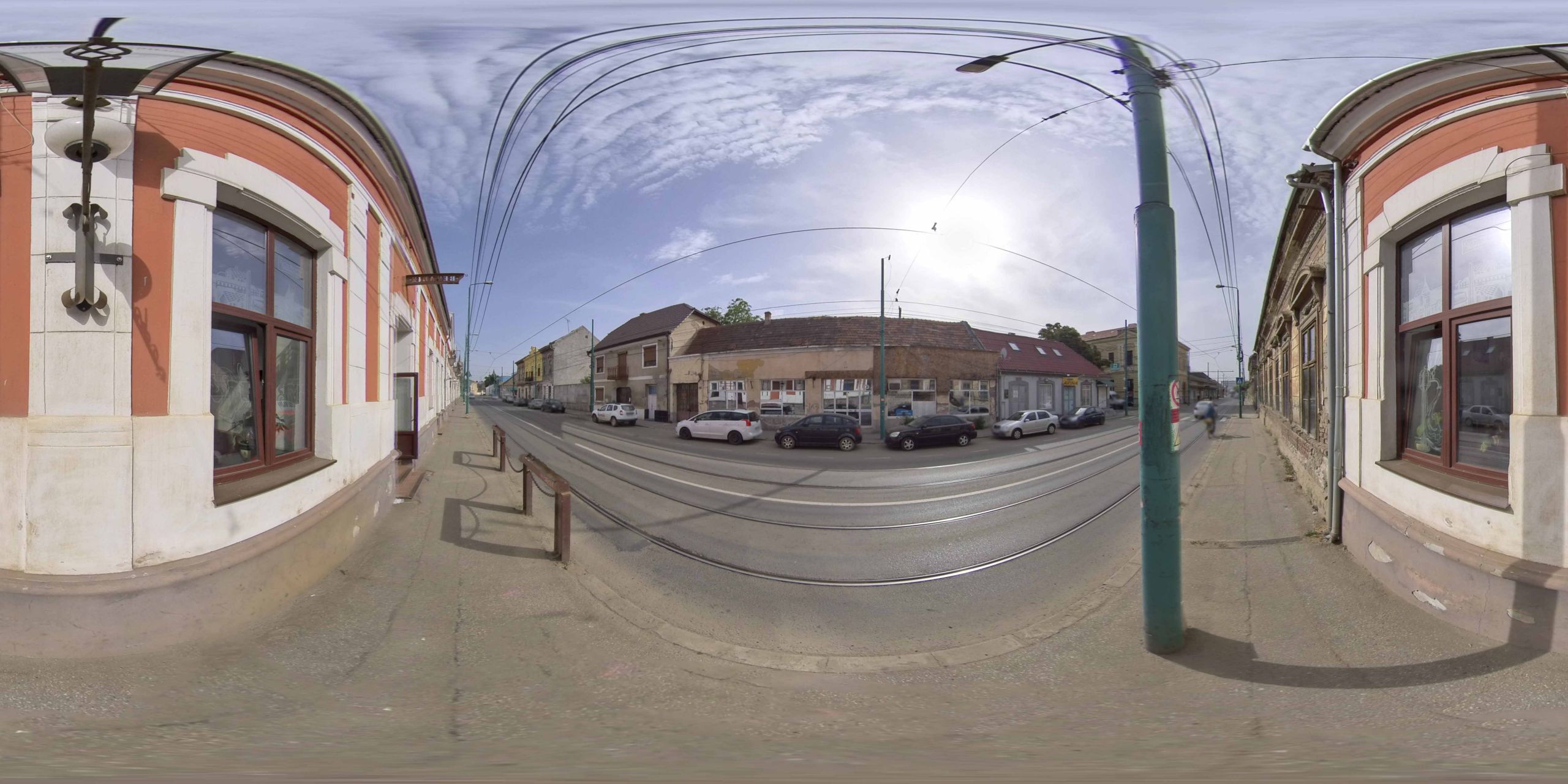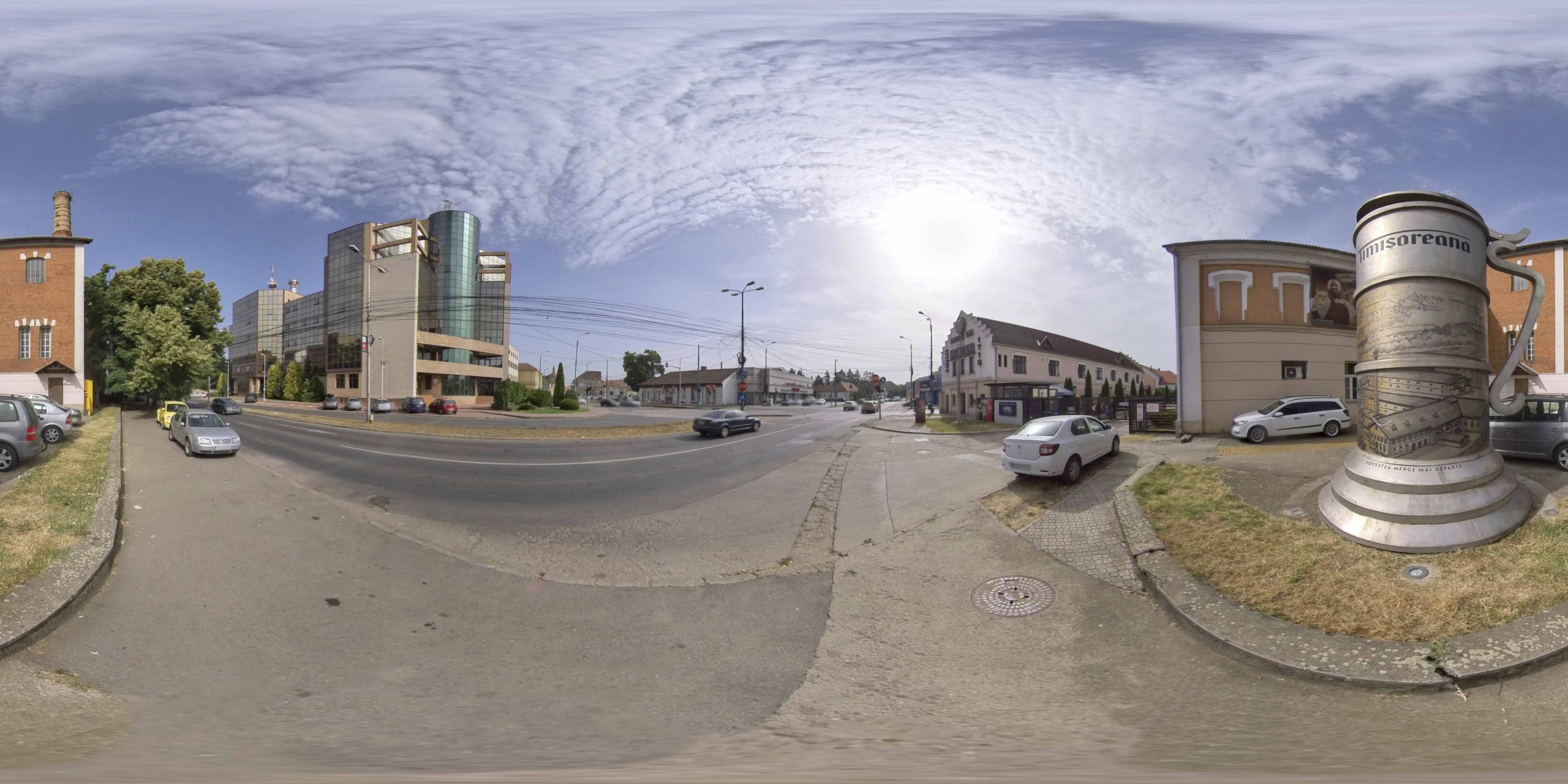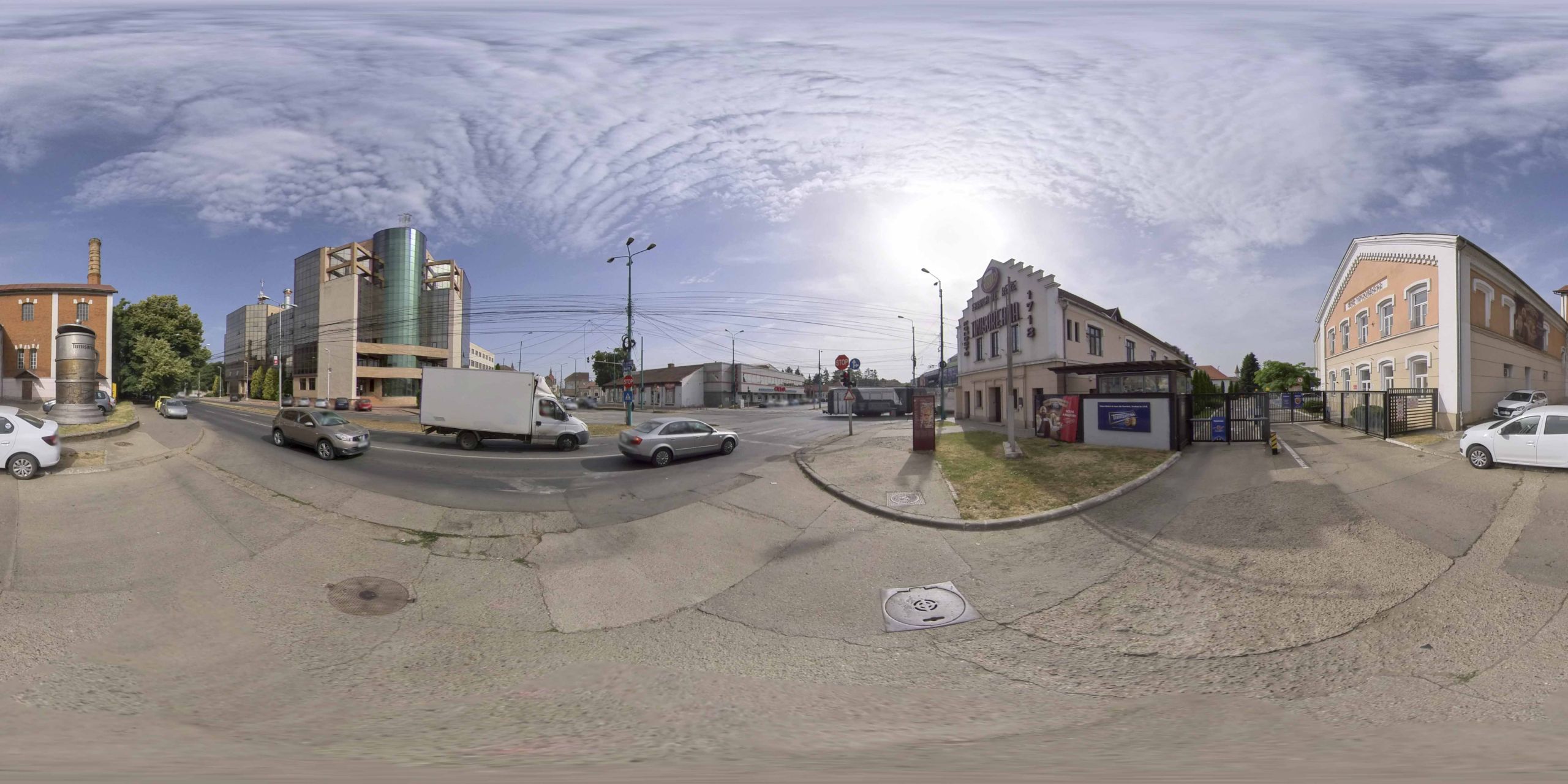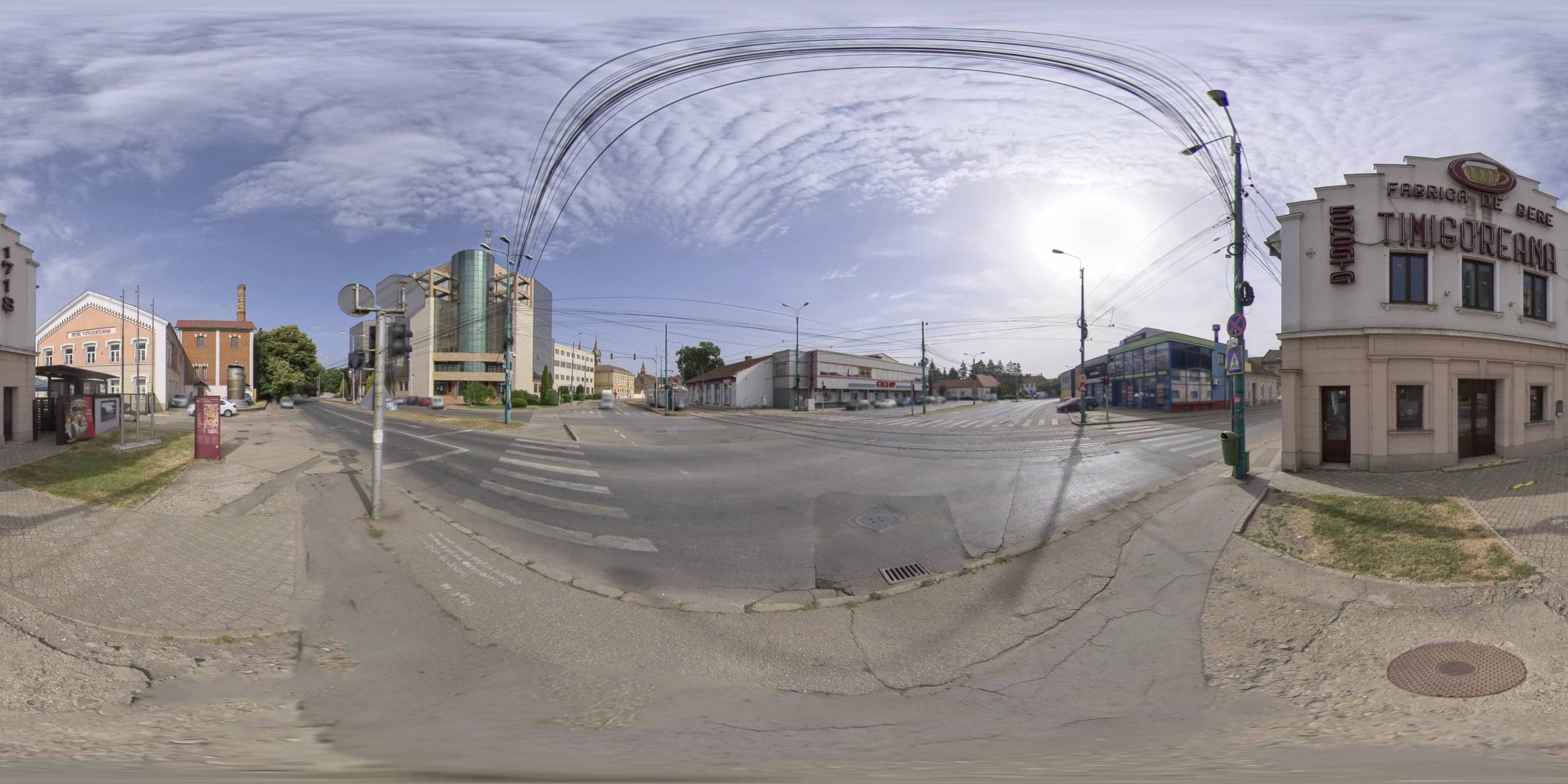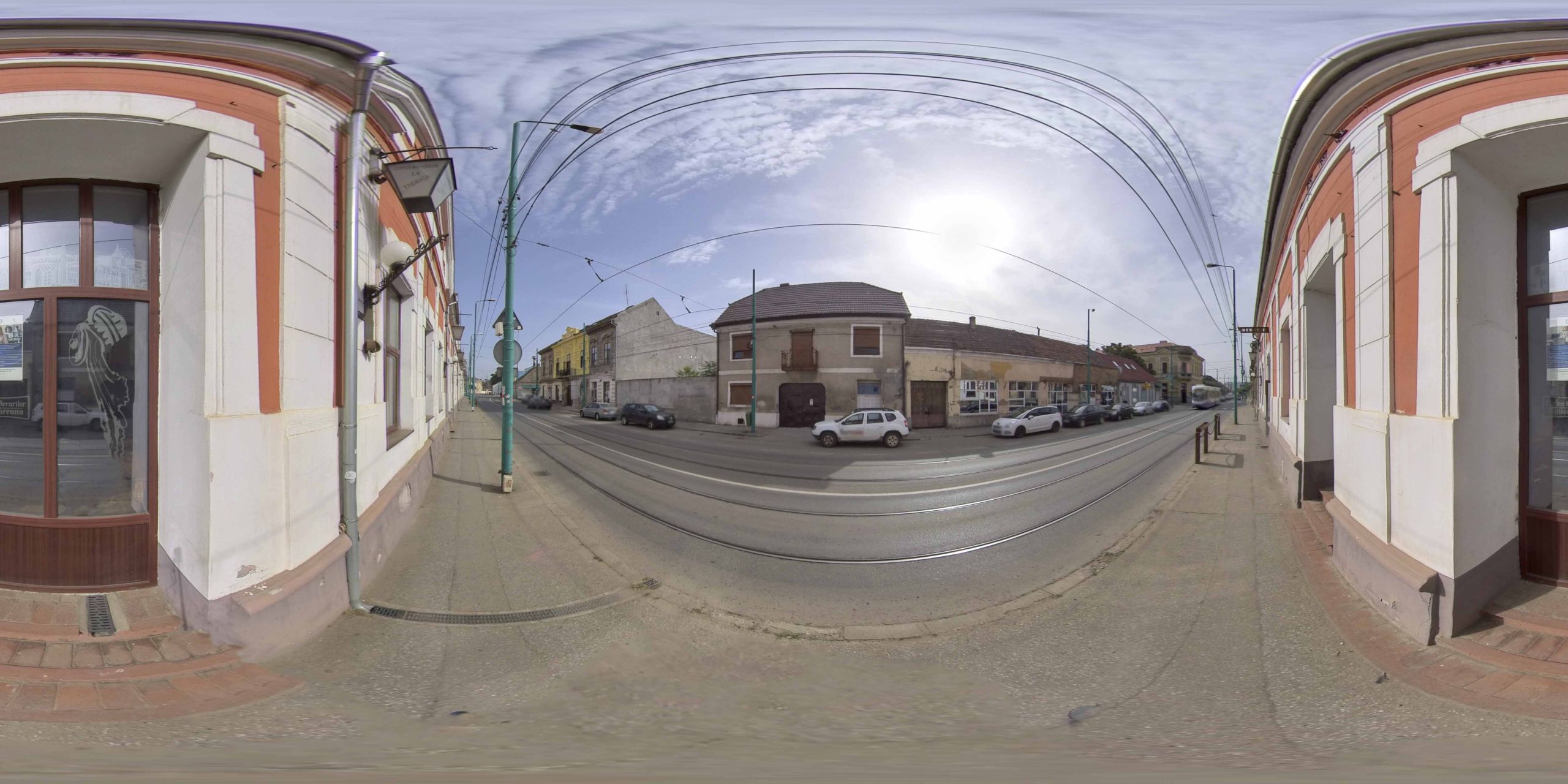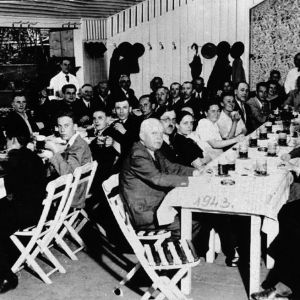Beer Factory, 28 Stefan cel Mare Street
The Brewery is one of the most important factories in the Fabric neighborhood.
Listen to the audio version.
The Brewery is one of the most important factories in the Fabric neighborhood. The first brewery has been certified in Timișoara since 1718. But at the time the Köpisch brothers' company was in Palanca Mare and not in the Fabric neighborhood. The Brewery, established in 1868 under the name “Fabrica pe Acțiuni”, did not cope with the economic problems caused by the collapse of the stock exchange in Vienna, so the company was liquidated.
Alexander Bayer's attempt to reinvigorate this industrial unit had a similar fate. In this context, the First Savings Bank from Timișoara bought the establishment at auction. Finally, in 1883, the factory was purchased by the wholesale trading company “Deutsch Ignác és Fia”, which enjoyed a good reputation. They started the reorganization of this industrial unit under the name “Fabrikshof Bierbrauerei Aktiengesellschaft” and entrusted its management to capable specialists who contributed to the development of the factory. In the last decade of the 19th century, a fire affected the main building and industrial facilities.
On the occasion of the reconstruction, which began immediately, the company was equipped with the latest technologies, being arranged artificial cooling installations, its own malt product installation, and huge storage cellars, popularly known as “catacombe”. Besides the Brewery, a summer garden, a dance hall, and a party brewery were arranged. A new joint-stock company, part of the Szana concern, took over the control of the Timișoara Brewery S.A (“Temesvarer Bierbrauerei AG”) in 1911.
At that time, it had 120-160 employees and produced with the help of the steam engine of 250 horsepower a quantity of about 60,000 hectoliters. Assortments produced in the early twentieth century included: "Casino", blonde, prepared according to the Pilsen method; "Corvin", with high sugar content; "Record Special", intense blond beer or "Englisch Porten", intense black beer.
Bibliography:
- Josef Geml, The old Timișoara in the last half of the century 1870-1920, Cosmopolitan Art Publishing House, Timișoara, 2016.
- Getta Neumann, On the trail of Jewish Timisoara. More than a guideBrumar Publishing House, Timisoara, 2019.
The Brewery
Listen to the audio version.
What was The Brewery like? I’ve also been down into the cellars. It’s cold (laughs) and the barrels reach the top, I don’t even know how tall they are, they have a small plug, a small tap and of course, they have blonde beer, huge deep tanks. You can drown in beer. I visited it in 1960. I’ve visited the brewery several times. I went to the cellars there, it’s very chilly, it’s cold down there. Today most of the brewing equipment is above the ground, but the tanks are down there somewhere. I asked the workers there to pour me some beer. They served me beer, it was like ice, couldn’t drink it. They use hops, as in the original recipe, they also make dark beer; anyway, the founder, I think the founder was a Transylvanian Saxon. Can’t remember his name. This brewery is celebrating I do not know how many years of existence. It’s written on the bottles. It’s a famous company, among the oldest, Fabrizius was the owner. The Kimmel liqueur manufacturing company was over there. It was a privately-owned company. They produced liqueur by maceration, there were barrels in a row, where they fermented fruit and so. They also added coffee, sugar ... It was a liqueur manufacturing company... I think it went bankrupt. The house is still there today, the building.
Oscar Schwartz, born in 1910 in Vienna - excerpt from an interview by Adrian Onică, Timișoara 1999, The oral history and anthropology group archive, coordinated by Smaranda Vultur.
Craftsmen were meeting at the Brewery, at Wittemberger, at Iles. Wittemberger was across from the Brewery. That's where the older people would gather and the younger ones, 10-15 at a time, would rent a table and play cards. They had a lot of fun! There were pool tables, chess tables. In the evening there was dancing. My father was an ordinary man, a cashier at the bank and then became a teller, but that was later, that he learned and had qualities: he was writing letters very nicely. He used to take us on Sundays to Luna-parc, to the Green Forest, where the C.F.R. stadium is. It was gorgeous! There were all kinds of entertainment! There was, for example, a lake with ducks and people would throw hoops at them. And every two or three weeks, by chance, you would hit a hoop on a duck and a prize would be given. You could shoot from 11 metres. Different comedians would come and put on shows. You could drink the delicious Azuga beer, which was then a new, fashionable beer. There was also beer from Timișoara: Dreher, Timișoara or Hungarian beer, Köbánya. There were those huge pretzels for children. And people would go out and have fun for a small amount of money. All this was cheap, any commoner could afford it.
Horwáth Lajos, born in 1921, in Becicherecu Mic - excerpt from the interview conducted by Antonia Komlosi in Timișoara in 2001, published in Smaranda Vultur, Vlad Colar, Thomas Remus Mochnacs, Gabriela Panu, Memorie și diversitate culturală la Timișoara: meserii și meseriași, Brumar Publishing House, Timișoara, 2013
After 11 years I got divorced, and for 30 years I have been married to Faber Waldemar, who is a man you rarely meet. My father had friends who were Jewish, German and Serbian, but mostly Jews came to us. My mother worked at Kohn Adolf, who was Jewish, in Fabric, across from the Brewery. It was a big varnish and paint company. My mother was a cashier there, then she worked at Noris, an electrical company, which was also owned by a Jew and was in Vertes Street. Textile shops were also owned by the Jews Denias and Pollak, as you walk towards the train station, on the corner. Of the Germans, Zikkeli had a delicatessen shop on Treboni Laurian Street.
Terezia Faber, born in Timișoara in 1930 - excerpt from the interview conducted by Roxana Pătrașcu Onica in Timișoara in 2001, The oral history and anthropology group archive, coordinated by Smaranda Vultur.
Listen to the audio version.
Ladybug
by Adelina Sălăgean, 6th grade
"Grigore Moisil" Theoretical High School Timișoara
It was a rainy autumn day, with a strong wind that shook the colorful leaves into a soft, vivid mat.
Somewhere on the outskirts of a quiet little town, there lived a family of ladybirds, parents and two children, Lulu and Lila. Lulu was the eldest boy, already 18, and Lila was the younger sister, aged 6. The family had only moved to the city a couple of weeks ago and everyone seemed to have adjusted to their new life - everyone except Lila. She was having a hard time adjusting to the changes and felt that no one fully understood her. And today was even harder: it was her first day at school.
Lila woke with excitement and prepared her backpack, gathering her courage for what lay ahead. She took off with her backpack on her back, and a breeze fluttered her wings until she arrived at school. There he saw his new classmates. Everyone was talking and laughing, but Lila didn't know what to do. The little ladybug felt lonely. She sat down on the bench with her name written on it and waited impatiently for the teacher to arrive. When she came through the door, there was silence.
- Hello, children! I am your new teacher. All the children call me Bubu, she introduced herself with a big smile.
- All the children answered in chorus.
Being the first day, Bubu explains the school rules and tries to make them feel welcome. While Lila was daydreaming, a classmate suddenly whispered to her:
- Do you want to meet me in front of the Opera House tomorrow? she asked
- Sure, see you there! replied Lila, without thinking.
When she got home, Lila told her parents about the invitation, and her mother told her about the Opera House:
- The Timișoara Opera House is an old building, built in 1875, also known as the Palace of Culture. It is located right in the city center, opposite the Orthodox Cathedral.
- How cool! said Lila.
- And while we're on the subject of old buildings in Timisoara, why don't we go to Timisoara Brewery? I hear there's good food there, and I think Dad would prefer a cold beer.
- Good idea, nodded Lulu, who had just walked through the door.
A few hours later, after their father came home from work, the family got ready to go to the restaurant. Once there, the ladybugs received their food and savored every bite. It was delicious!
- Alas! Lila said when she finished eating. I was supposed to meet a colleague in front of the Opera.
- Then go there quickly, said her father. Come on Lila, fly!
Lila took off immediately and in a few minutes arrived at the Opera House. There she began to shout to her colleague and search for her among the passers-by, but to no avail. Apparently she had already left. Disappointed, Lila again felt alone and misunderstood. The little ladybird flew back home, thinking about how hard it was for her to fit in and how she wished she could find real friends.
–-
A bumpy ride
I remember with love and fun the first time I came to Timisoara alone. It was a beautiful, sunny September day. The city was full of life and buzzing with the sound of cars.
I arrived by train at Gare de Nord, from where I made my way to the place waiting for me, namely the Student Complex. I was a fresh student looking forward to spending my best years as a student in a completely new city, away from family and friends. But I knew I was in for countless adventures in this city and that I would make new friends that would last a lifetime.
What I didn't know that day is that I will have a first experience that will remain in my memory forever, and what a memory it will be.
After leaving the North Railway Station, my steps took me through Maria Square, past the Merlin Theatre, to the library of the Polytechnic University of Timișoara and from there to the Student Complex where I was supposed to arrive.
I thought at the time that the biggest adventure I could have that day was finding the hostel I was staying in, oh my goodness was I wrong about that.
After getting my room key and meeting one of my future colleagues, it was time to pick her up and head for the train station to get home, and this is where the real adventure begins...
Being alone for the first time in this city I didn't know the streets or the means of transport that could take me to the train station, so I took it easy again. But not the way I came but the other way round.
We walked for a good few minutes, turned left then right and kept going. I began to notice that I no longer recognized the buildings I was passing. After walking for a while, hoping to come across a familiar place, I found myself next to Timisoara Brewery, (what I saw for the first time was the huge pint in front of her) at that moment I realized that something was wrong and I was not on the right track. I felt like Dorothy after being picked up by the tornado and taken to the land of Oz.
I knew I had to get to the station so I wouldn't miss my train home. My first thought was to use the GPS on my phone, but I was running low on battery power that I needed to save. Asking people on the street I didn't even think about because she was so shy.
But I noticed that in addition to The Brewery some tram tracks were passing by, and at that moment I remembered that you can get to the North Station by tram. And then what occurred to me, to follow the tram tracks all the way to the station. Just as Dorothy walked down the yellow path to the Wizard of OZ
.
I walked on my own "yellow paths" for more than an hour until I reached my destination. The joy I felt at having made it on my own from an area I didn't know to the station was immeasurable. Looking back now I realize it wasn't one of the best decisions to go after the tram tracks, but if I hadn't taken it at that time now we don't have this fond and funny memory in the same din.
How many times do I now pass by The Brewery I remember that moment and laugh thinking about how much time has passed since then, how much I have changed, evolved and how much I have learned about myself and this city. So The Brewery will remain an important landmark for me both historically and emotionally.
Ioana D. German, UPT student, 2023
